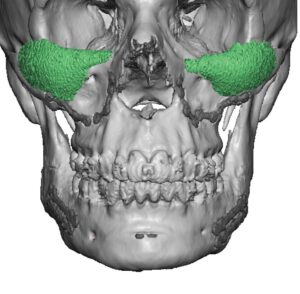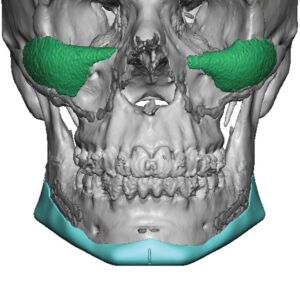Background: The sagittal split ramus osteotomy (SRRO) of the mandible is the most common form of lower jaw reshaping/repositioning. While a very effective procedure its aesthetic benefits are sagittal in dimension only. It can bring the lower jaw and chin forward to improve lower facial projection but it can widen the chin or jawline and has a limited ability to make specific vertical changes as well.
In some cases of SSROs the existing shape of the jaw angles can become deformed or aesthetically worsened. This can occur because of how the two split segments of the ramus were put together with the distal segment advancement or some bone atrophy of the proximal bone segment can occur. Regardless of the cause alteration in the shape of the jaw angle after orthognathic surgery are not rare. Having seen many after mandibular osteotomy 3D CT scans more pronounced antegonial notching (or even the creation of an antegonial notch that did not exist before surgery), blurting of the actual gonial angle and thinning of the bony ramus width are typical changes I have observed.
To create a finishing 3D effect of the bony jawline implant augmentation is needed. While standard jaw angle implants have their role in primary jaw augmentation a history of SSRO introduces variables in the shape of the bone along with the presence of fixation hardware that makes their use aesthetically risky. A custom jawline approach is always more predictable and can account for jaw asymmetries and the presence of plates and screws.
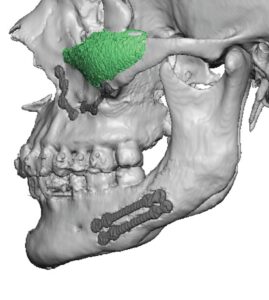
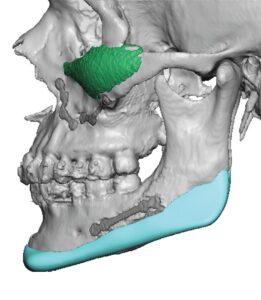
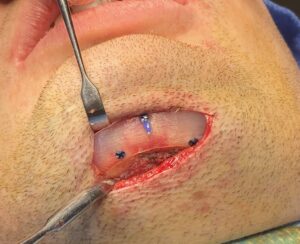
Not every custom jawline implant is done to create a larger lower jaw or make bold changes. An equal number are done to merely enhance a jawline that needs a little more shape on which the jawline implant is relatively small. The SSRO has already done a significant part of the aesthetic ‘work’ of the lower face as seen in this patient. The jawline implant merely provides the finishing 3D touches to a good bony foundation.
Case Highlights:
1) Fixing jawline defects and/or improving the shape of the lower jaw after a sagittal split osteotomy requires a custom jawline implant.
2) Loss of jaw angle shape and adding width is the primary benefit of the posterior portion of the jawline implant.
3) The existing hardware from the sagittal split osteotomy does not need to be removed and actually helps with the placement of the jawline implant.
Dr. Barry Eppley
World-Renowned Plastic Surgeon



